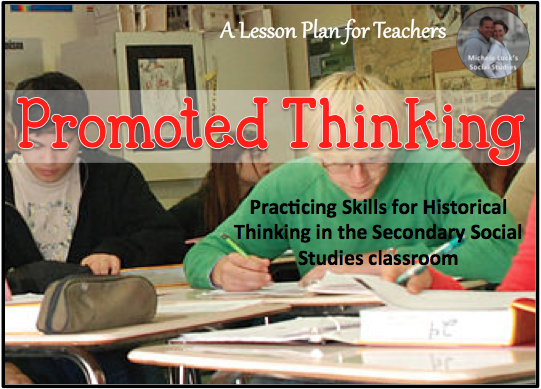Students often enter their Social Studies classroom thinking it will be a course based on simple facts and memorization. They do not see the classes in the Social Sciences as those requiring thought, and definitely not ones that will teach them critical skills useful in their academic careers or in their adult lives. They are wrong! Social Studies courses are exactly where they can learn and practice to THINK, the cornerstone for all other critical learning.

As Social Studies teachers, we need to stress those thinking strategies in our classes to help students develop a greater understanding of our content, but also to become stronger overall learners.
Here’s just a few strategies to help you introduce critical and historical thinking in your course:
- Asking Questions – This skill sets the stage for all others. Through asking questions, students learn to acquire content, to research and investigate, to interpret or analyze information, and to develop greater, more essential questions for deeper understanding and thought.
- Monitoring Information – As students learn to effectively highlight, annotate, and underline information as they are reading text, they are practicing the vital skill of understanding. Developing this skill helps them find greater success across the curriculum.
- Activating Background Knowledge – Students are often unaware that they already know something about our content. Learning to turn on that background understanding and to apply it to current learning will facilitate deeper comprehension and greater engagement with the content and in learning.
- Evaluating and Judging – Practicing analysis, viewing information from multiple perspectives, and determining what is important are vital skills for effective citizenship, but also for learning. While these skills are essential to the study of history, they are also the foundation for many careers in our modern society.
- Summarizing – Students learn to summarize in grade school, but developing this skill is paramount for higher-order thinking and deepened learning. At the secondary level, students should practice both concise summary and expanded summary to show comprehension, but also to develop their ability to express themselves and their individual ideas effectively.
The skill and process of thinking is often something we take for granted. We assume that it is a natural skill, once everyone can acquire without instruction or practice. But if you look around us, and listen to conversations among our younger generations, you will see that is not the case. Students today, especially in their abbreviated world of interactive communication, need explicit instruction in how to think effectively. Start teaching and practicing that in your Social Studies classroom!

Happy Teaching!